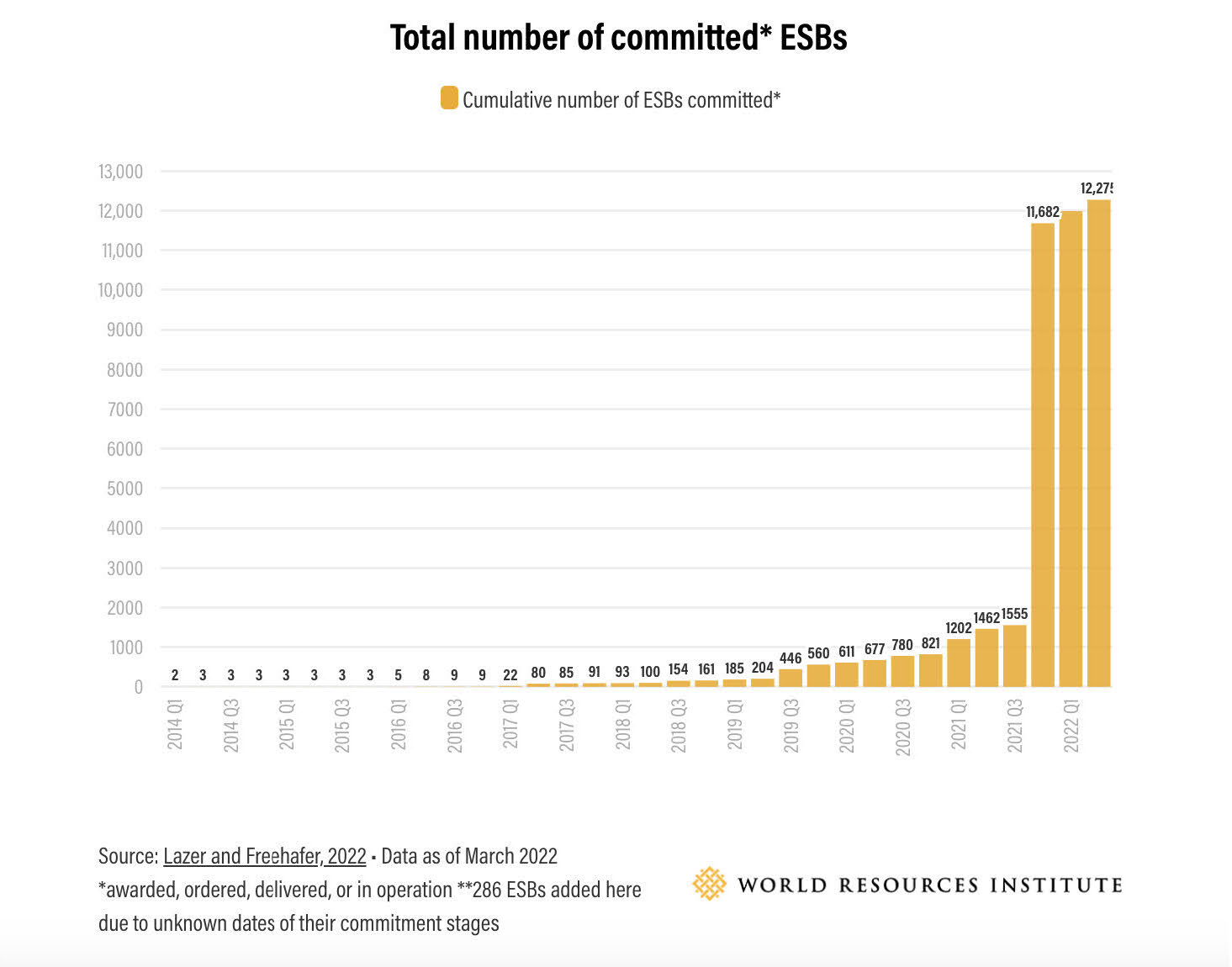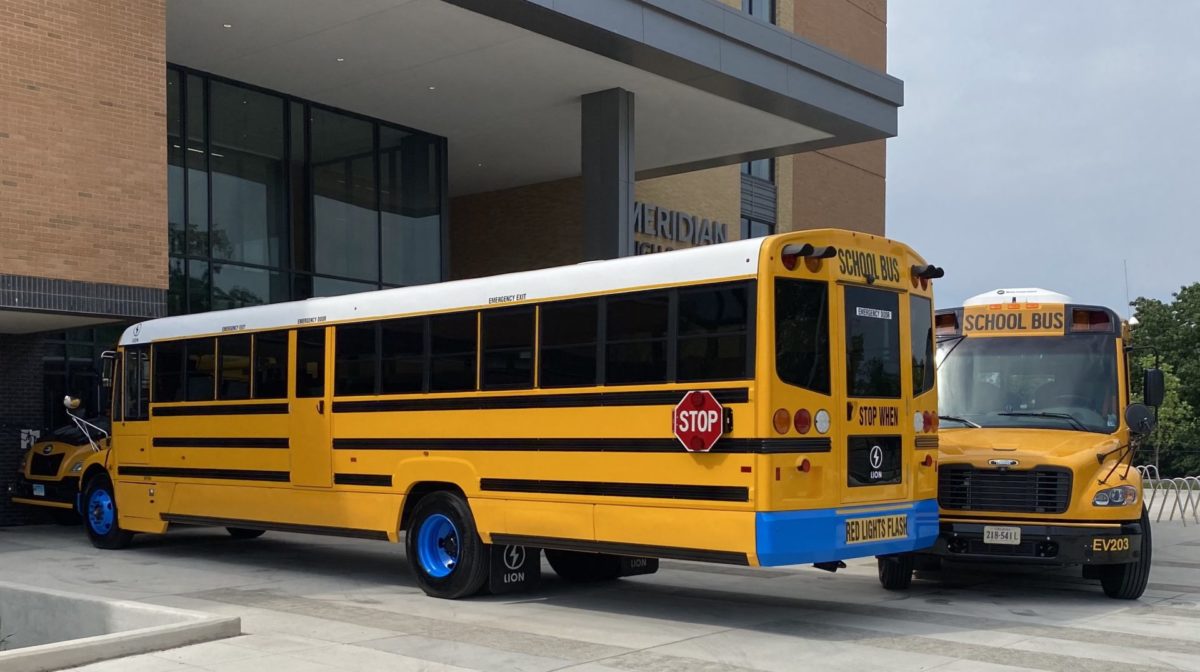As children head back to school this fall, some families may notice that their yellow school bus has gotten an upgrade. Electric school buses are rolling onto streets in communities all across the U.S., with over 12,000 electric school buses committed in 38 states, and more to come. With funding from the Infrastructure Investment and Jobs Act, the U.S. Environmental Protection Agency’s (EPA)’s Clean School Bus Program is providing $5 billion over the next five years to replace polluting diesel school buses.

The benefits of transitioning the school bus fleet to electric, zero-emission tailpipe models are enormous. The transportation sector is responsible for almost 40 percent of the nation’s greenhouse gas emissions. There are nearly half a million school buses in the U.S. that transport more than 20 million children—making it the largest mass transit operation in the country. Nearly 91 percent of these school buses run on diesel fuel, the emissions from which are both harmful for the planet and for our lungs. Researchers have found that the level of diesel exhaust inside a diesel school bus is up to eight times what you would find in an average sample of the air. Daily diesel exposure for children, with their developing lungs, contributes heavily to childhood rates of asthma and respiratory diseases, and can cause cognitive impairment. Children from low-income communities and communities of color are disproportionately subjected to this harmful air pollution, and are more likely to ride in school buses.
On top of the health benefits, zero-tailpipe-emission school buses can provide financial benefits to school districts. Electric school buses can cost up to 60 percent less to operate and maintain over their lifetime than diesel buses, saving school districts money. Additionally, the large batteries and predictable operating schedules for school buses make them a prime candidate for Vehicle-to-Grid (V2G) integration. V2G technology works by allowing batteries to charge when energy is abundant on the grid, and return energy to the grid when demand is high. Utilities will pay customers who can provide this service, and as a recent example in North Carolina shows, school districts could use their electric buses to reduce their energy costs, freeing up more resources for their schools and students.
It’s easy to see why school districts are interested in upgrading their fleets to electric buses. The biggest hurdle to wide-scale adoption? The up-front cost of the buses. But several Energy Foundation grantee partners, utilities, and manufacturers are working to change that. For example, the Alliance for Electric School Buses has worked for years to make the public and policymakers aware of the benefits of policies that fund this transition, build charging infrastructure, and prioritize low-income, rural, and communities of color, who are disproportionately impacted by diesel pollution.
Clean Energy Works provides policy expertise at the national and federal levels on inclusive utility investments, an innovative financial instrument where a utility provides up-front capital to pay for electrification upgrades and recovers its costs through a fixed charge on the participating customer’s utility bill. Since 2017, Chispa, a project of the League of Conservation Voters, has organized the Clean Buses for Healthy Niños Campaign that educates decision-makers at the state and local levels on the many benefits of financing zero-emission electric school buses, ensuring kids get clean rides to school. The recent funding round for EPA’s Clean School Bus Program represents a huge win for advocates:
“Chispa’s members have been fighting for a clean ride for kids for years,” says Johana Vicente, Senior National Director of Chispa National. “EPA’s initial efforts are a historic investment in electric school buses and we are excited to welcome school districts to begin applying for funding now. As communities of color are disproportionately impacted by air pollution, we will continue to push for race and air-pollution-level indicators to be part of the criteria to ensure that low-income communities of color who most need cleaner air quality get the benefits first. We look forward to working with the EPA in real-time to center equity, prioritize electric school buses, and ensure that this initial round of transformational funding will reach the communities this program is intended to help.”
The transition to electric school buses is a huge opportunity with enormous potential to benefit communities across the U.S. Electric school buses can reduce operating expenses for school districts, provide valuable storage for renewable energy through V2G technology, and provide quieter streets and cleaner air, which is especially important in low-income communities and communities of color. To help speed this transition, states can adopt transportation electrification targets, fund grant and rebate programs to lower the up-front cost of the buses, and provide outreach and education to school districts—particularly those with low-income communities. States also can adopt the Advanced Clean Trucks rule, requiring manufacturers to sell clean buses in their state. It has never been a better time for school bus fleets to graduate!
